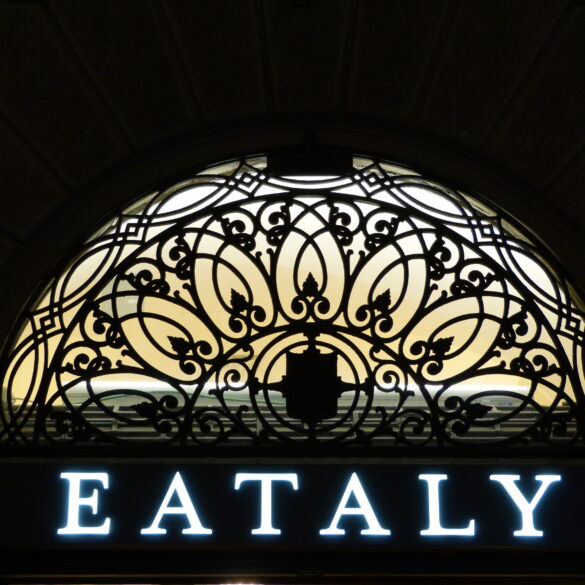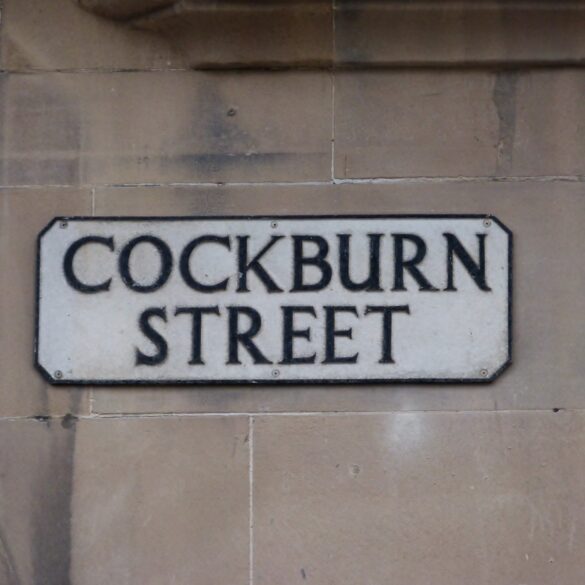Madrid, Spain
I had 4 days off for the Presidents’ Day weekend in February and thought it might be nice to take that opportunity to visit Madrid.
Sean booked an apartment that was pretty central. The downside to renting apartments is that you don’t get breakfast or any other meals included and there are no other amenities you might see in a hotel such as a bar or even vending machines. A big downside is that you can very noisy neighbors just like you can when you live in an apartment. However, the upsides can outweigh the downsides. The biggest upside to me is that you generally have a lot of room in which to spread out. So, if you come home from a long day of sightseeing and want to relax in your own space and have a couple of drinks or something, you can sit on a comfortable couch and do that instead of sitting on a bed in a hotel room. Another big upside is that apartments are generally much more reasonably priced than an equivalent-sized hotel room would be.
The gentleman who checked us in didn’t speak much English, but thanks to about 8 years of Spanish in grammar school, high school and college, 30 years later I was left with the amazing ability to both speak and understand very simple sentences in that language. But seriously, I did understand most of what he was telling me in Spanish about the keys and the kitchen equipment and such. It was quite amusing when he decided to bust out his English while telling us about the kitchen, though. He was explaining how good the tap water in Madrid is, and then he added “Not like Barcelona!” It just cracks us up that no matter you go, the people of one city are always dissing the people of some other city.
We had had an early flight and for some reason were both beat, so we took a little nap and headed out to explore in the late afternoon.
The apartment was just a few blocks away from the Puerta del Sol so that was our first destination.
The most popular attraction at Puerta del Sol seemed to be this little guy.
That bear eating berries from a madroño tree is the most famous symbol of Madrid. People were coming by constantly to have their photo taken with the statue. Supposedly the original name of the city of Madrid was Ursaria, meaning “land of bears” in Latin. At one time real bears could actually be found roaming the forests outside the city.

The building you see with the bell tower was the first post office in Madrid, built between 1766 and 1768.

It was also once the police headquarters under the dictator Francisco Franco. By the way, I didn’t realize this until my first visit to Spain back in 2011, but Spain was under a dictatorship until 1975. Pretty stunning, huh?
The bell on top of the building rings 12 times on New Year’s Eve. People eat one grape each time the bell chimes to bring them good luck in each month of the new year.
This plaque is on the wall of the old post office.
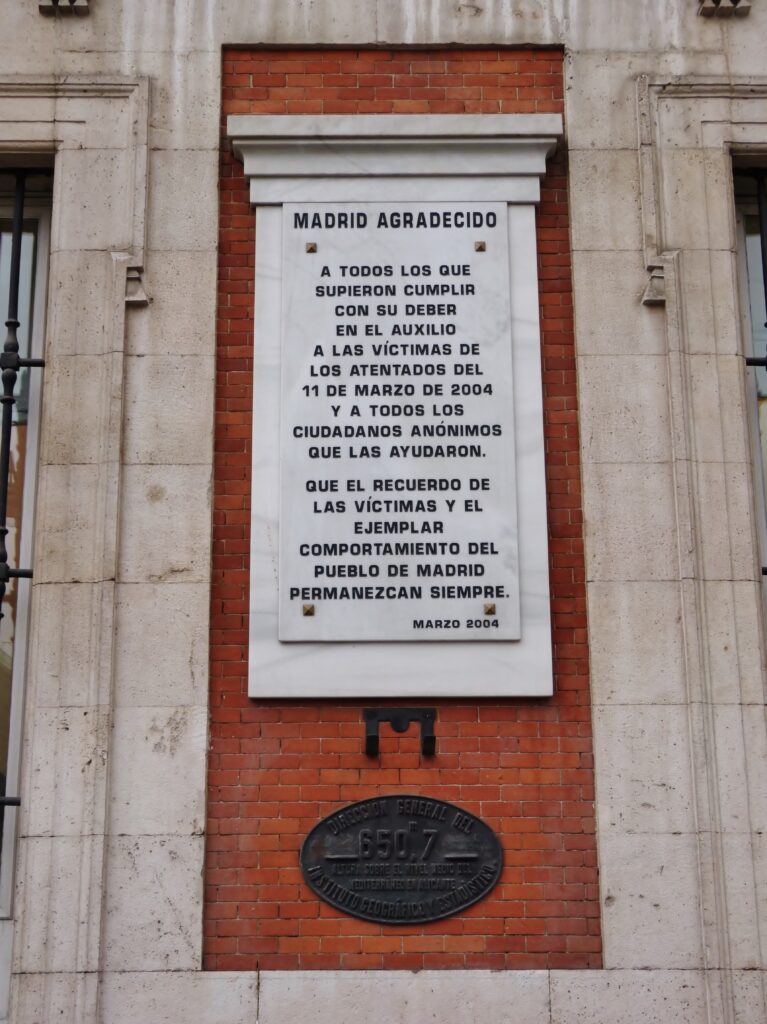
It memorializes the relief workers who provided aid after the train bombings on March 11, 2004. I remember that happening and couldn’t believe it was 10 years ago when I saw the plaque. 191 people were killed and 1,800 were wounded in the ten explosions.
There are now guards posted outside of that building because it’s the county governor’s office. I stealthily approached one of them so I could take a photo of his hat.

Ostensibly the backs of the hats are flat so that the guard can comfortably lean against the wall while taking their smoke breaks.
This marker is in the ground in front of the governor’s office.

It’s the “kilometer zero” marker. If you see the tiny little gold circle in the middle, under where it says Km.0, you’ll notice 6 squiggly lines radiating out from the circle. These represent the six main highways of Spain.
Before I move on from this area, a word about its name. If you’re familiar at all with the Spanish language, you’ll know that “puerta” means door or gate and you may even know that Puerta del Sol means Gate of the Sun. I was expecting to see a gate here but my expectations were not met. It seems that the gate that marked the eastern edge of the city back in the 15th century is long gone.
After leaving Puerto del Sol we walked over to Plaza Mayor, Madrid’s main square in medieval times.

The statue is of Philip III, king of Spain from 1598 to 1621.
Dreadful events took place at Plaza Mayor during the Spanish Inquisition, which lasted from 1478 until 1834. I had no idea until just now that it had lasted that long. Among the dreadful events were autos-da-fé. This is going to sound terrible but I really only knew that term from the Mel Brooks movie History of the World Part I. It seems that an auto-da-fé was when heretics publicly repented of their sins and were then punished and/or executed.
Today the Plaza Mayor is full of costumed characters and street performers trying to make a buck, like the rotund Spider Man that you see here.

We caught Spidey just as what we assume was a bachelor party had surrounded him to take photos. And yes, that gentleman behind Spiderman is in fact dressed up as what you think he’s dressed up as.
Our next stop was the Mercado de San Miguel, a recently renovated indoor market. We were feeling peckish so we stopped for a coffee and some baked goods.
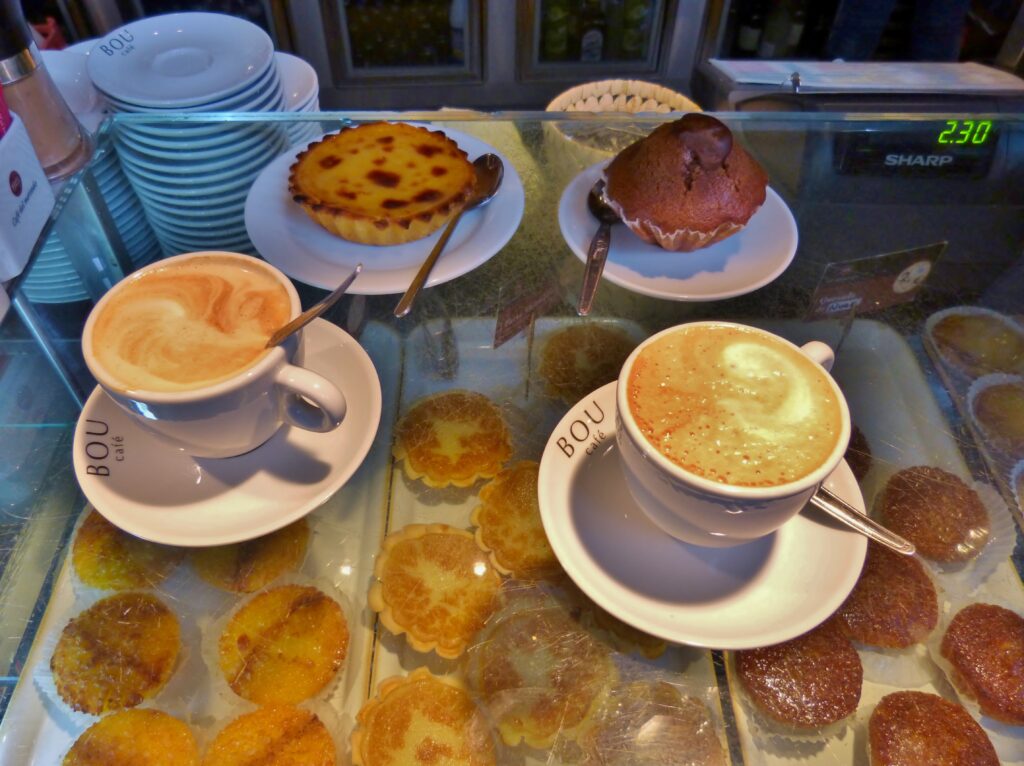
I figured I knew enough Spanish to confidently order the coffee, so I asked for “Dos café con leche” (two ‘coffee with milk’). The response I got from the barista was “I speak English, so…..” Alrighty then.
Coffee imbibed and baked goods eaten, we wandered through the market where Sean had his first tapas experience.

Tapas are basically snacks or appetizers that can be served either hot or cold. They can be very elaborate or as simple as a variety of olives. Sean is eating some salmon toast here, which is simply smoked salmon on top of a little piece of toasted bread. He was hooked on tapas after that and I have to say that I too really enjoy the concept of just snacking along at different places instead of sitting down for a big meal.
Our walk then led us to Madrid’s town hall.
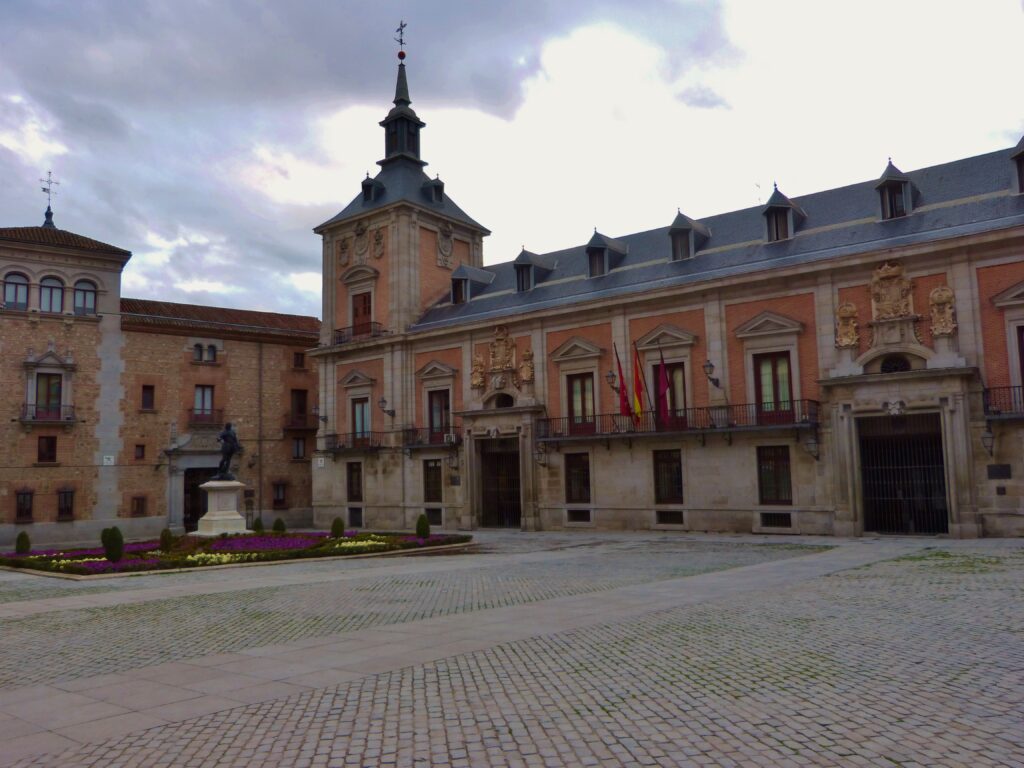
Ceremonies are still held here, although official duties are carried out elsewhere.
Above the door that you see to the left are three coats of arms.
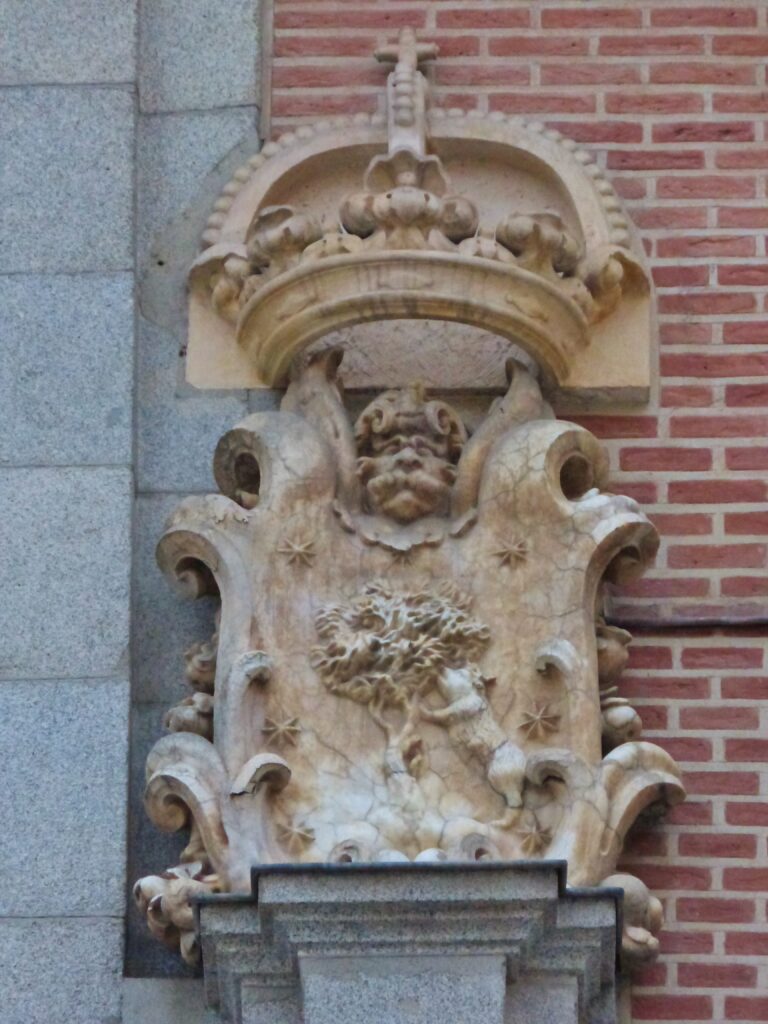
You can see the bear and the madroño tree again at the bottom.
Near the town hall is the oldest building and oldest door in Madrid.

That bar across the top of the photo is scaffolding. The little street was only a few feet wide, making it very difficult to get a photo of the entire door. You get the idea, though.
And there’s that darn bear again!

This time he was in the sidewalk on the street side of the town hall.
Back in 1906, there was an assassination attempt on King Alfonso XIII of Spain and his wife Victoria Eugenie on their wedding day.

The would-be assassin, Mateu Morral, threw a bomb hidden in a bouquet from a balcony on this building as the wedding procession passed by. The King and Queen survived, but 23 other people were killed by the bomb as were several horses. Morral was caught, but he shot and killed his captor and then commited suicide.
On to a less depressing subject, here is the Almudena Cathedral.
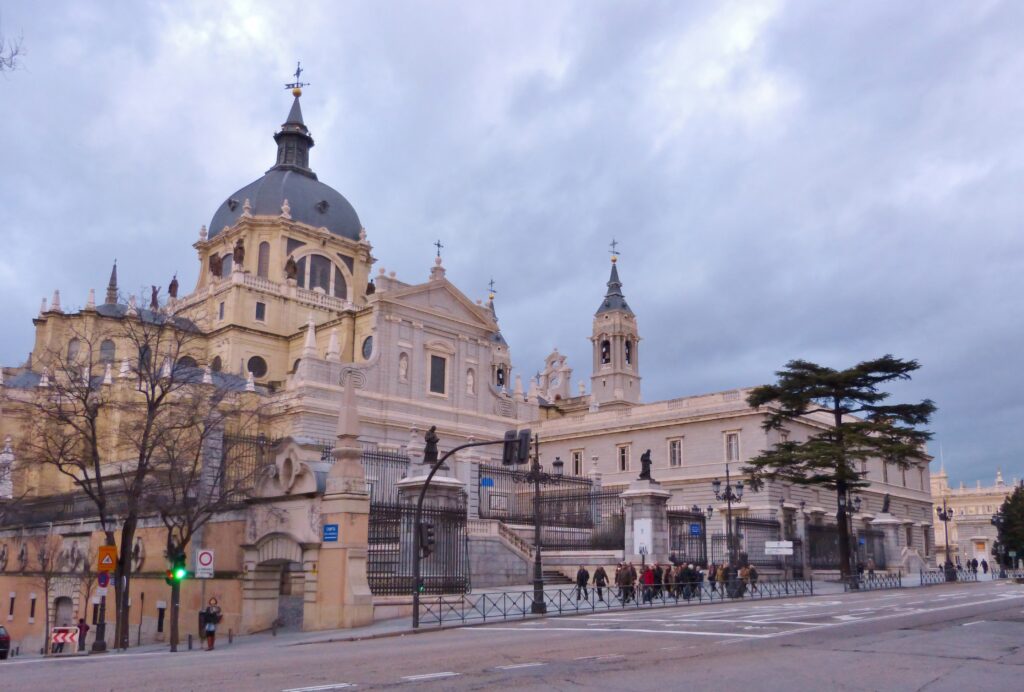
This cathedral is absolutely massive. It was just completed in 1993, 100 years after construction was begun.
Here you see a statue of Pope John Paul II outside the cathedral.
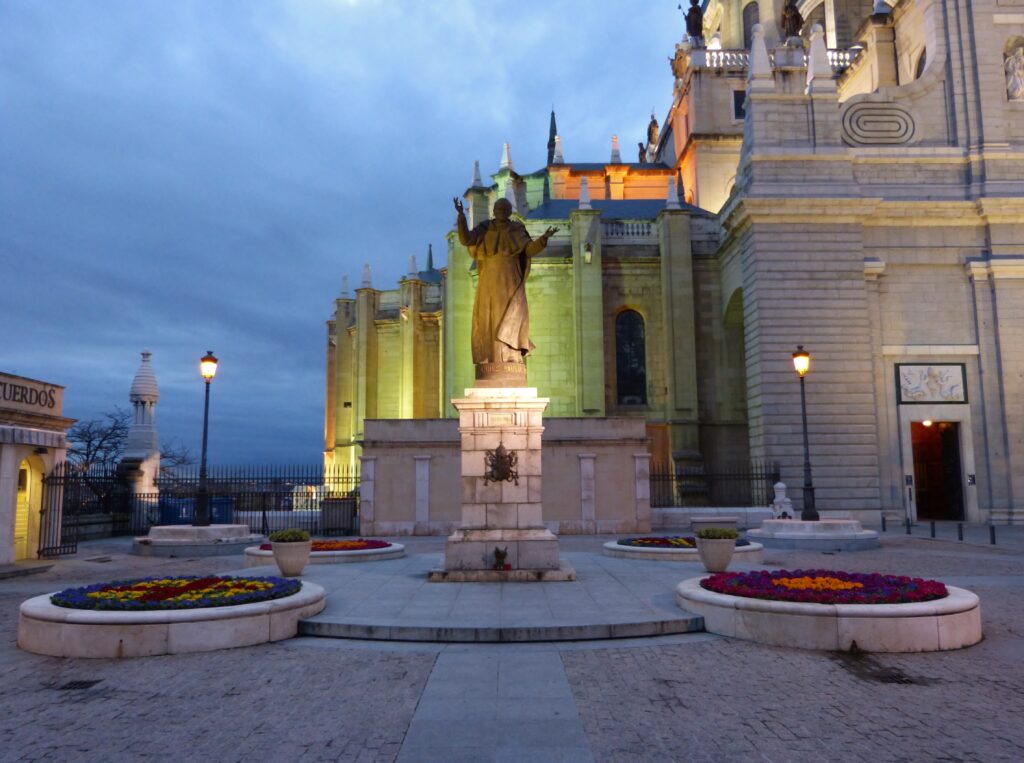
He consecrated the cathedral when it opened in 1993.
The Royal Palace is directly across from the cathedral.
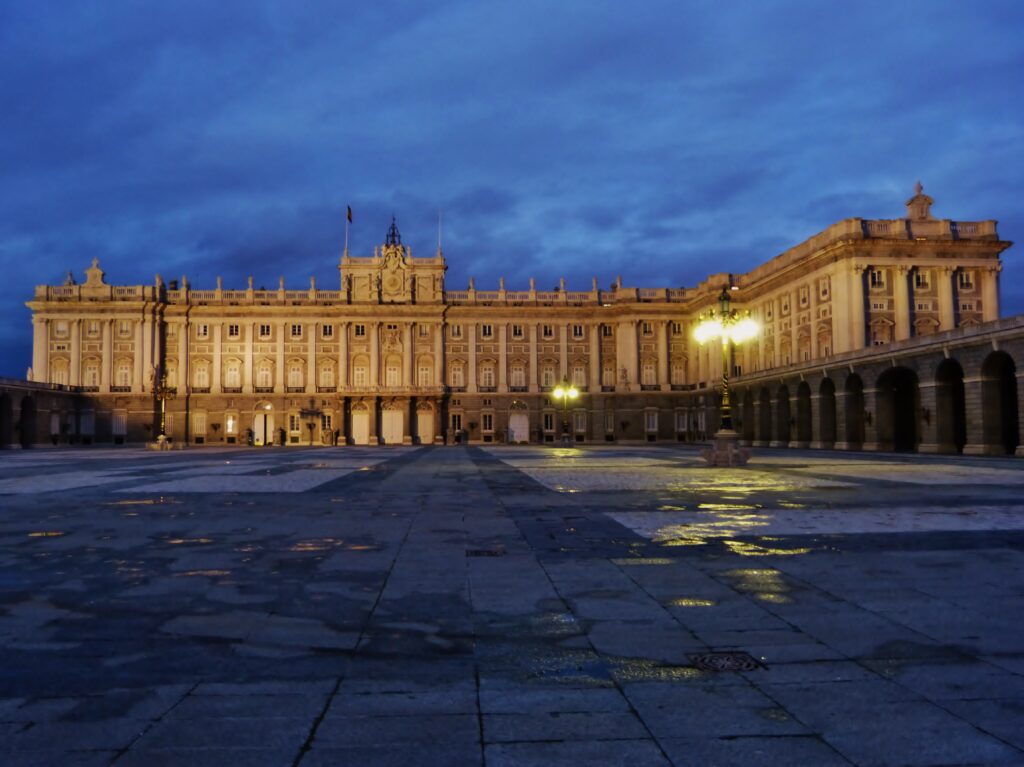
This place is also massive. It was closed for the night when that photo was taken, but we went back on Sunday and toured the inside of it, which was very ornate and impressive. We rented the audioguide to do the tour and it was very helpful. It made it one of the better palace tours we’ve taken.
Here you see another side of the cathedral, the side that’s directly across from the palace.
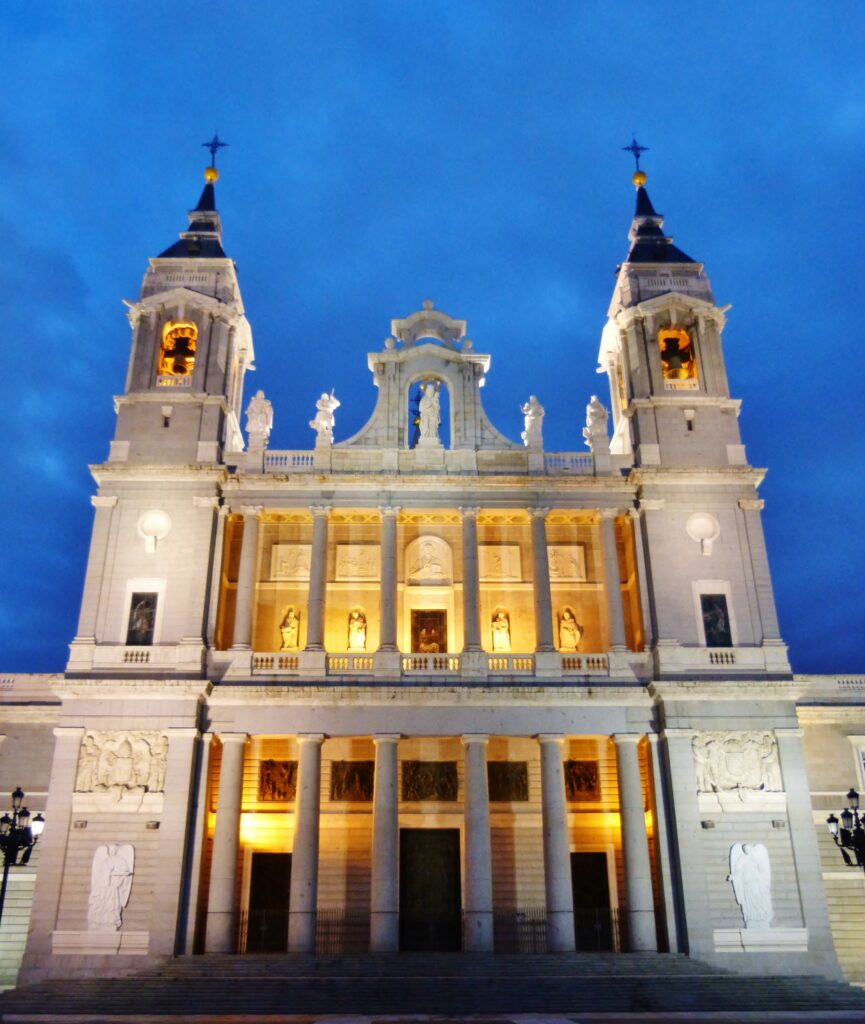
It looked beautiful at night.
You may have noticed photos of manhole covers in some of my other blogs.

This one was a bonus because look – there’s that bear again!
Seriously, he’s everywhere in Madrid.
We stopped at a little convenience store on the way back to the apartment to pick up some adult beverages. These were on the counter and made me chuckle.

If you remember the TV show Kojak, you may recall that he always had a lollipop. I just didn’t know there was an actual Kojak brand lollipop, especially in Spain.
Our last stop of the night was a place called Los Artesanos 1902.

For some reason I never had churros the first time I was in Spain so I had to have them this time. That hot chocolate you see there is for either dipping the churros into or drinking. Or both. It’s interesting to drink it because it’s the consistency of warm pudding.
Our first step the next day was the Prado Museum.

After buying our admission ticket, I used the restroom before starting our visit. While I was at the sink ready to dry my hands, I found that there were no paper towels in the dispenser. There were packs of them on the sink counter but none right by my sink. As I reached over to the next sink to get some, a woman nearby pushed them over towards me. When I thanked her, she said “You’re WELCOME!” in an extremely cheerful manner. She asked where I was from. I never know how to answer that question but this time I went with where I was born and said New York. She started gushing about how much she loves New York and the United States (always nice to hear!). I then asked where she was from and she held up her index finger to show that I should wait a minute. She then crossed her hands at her wrists, sang “Op, op, op, op, op, oppa Gangnam style” while doing the dance that goes along with the song. She then stopped, looked at me and said “Korea”. Probably my best public restroom experience ever.
This place, like the Uffizi Gallery that we visited in Florence last month, is overwhelming. I’ve decided that going to museums just exhausts me. I don’t know if it’s the standing and moseying around for hours or sensory overload or some combination of the two. I always say I’m limiting myself to 2 hours in a museum and then I end up staying for twice that long.
This is not to say that I didn’t appreciate what I saw there. Paintings by Goya, Velázquez, Bosch, Raphael, Rubens, Titian, Dürer, Bruegel, El Greco….the list goes on and it was just unbelievable. To see and appreciate everything I’d need several more visit, though, so we just took in what we could in 4 hours and then moved on.
This vertical garden is a well-known sight in Madrid.

It is close to the Prado Museum and right next to CaixaForum, a museum and cultural center. There are 250 different types of plants on the wall and 15,000 plants in all.
On our way to start our tapas crawl, we passed by a building with sort of crumbly walls.

Can you see the bear on the tree?
At the first place we stopped for tapas, I tried a glass of Ribeiro red wine.
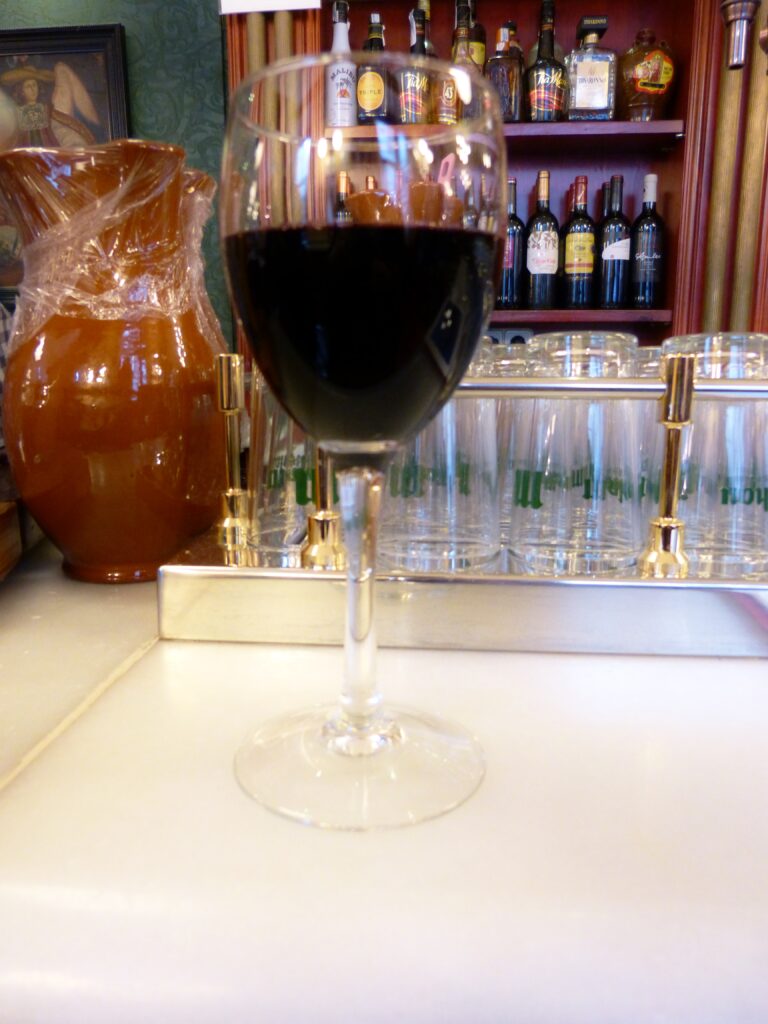
I generally prefer white wine over red but this one wasn’t bad.
Sean enjoyed some calamares fritos.

He said it was the best fried squid he’d ever had.
Moving on to our next step, we tried some Padrón peppers.

These things were sooooo good. They are simply fried in oil – no batter or anything – and then sprinkled with coarse salt. We polished off that whole plate of them with no problem. The little things you see on top of the peppers were sort of like crackers.
Along with our peppers Sean had a beer and I had sangria. Sean laughed when I ordered it and said he hadn’t seen anyone drink it since the 70s, but he changed his tune when he tasted it. It may have cheesy connotations for those of us who remember the 70s, but it’s a very tasty and refreshing drink.
The third stop on our tapas crawl had the best tap ever.

It’s a shrimp! And oddly enough this tap dispensed vermouth. Apparently it’s a very popular thing to drink at tapas bars but I didn’t taste any.
Sean tried anchovies, with sides of olives and potato chips, in the shrimp tap place. I won’t make you look at a photo of them but Sean said they were good too. I just took his word for it.
At our last stop of the night we had some San Miguel beer.

It’s brewed by the Mahou-San Miguel Group, a Spanish brewing company and is a tasty beer.
I can honestly say this one was a first for me.
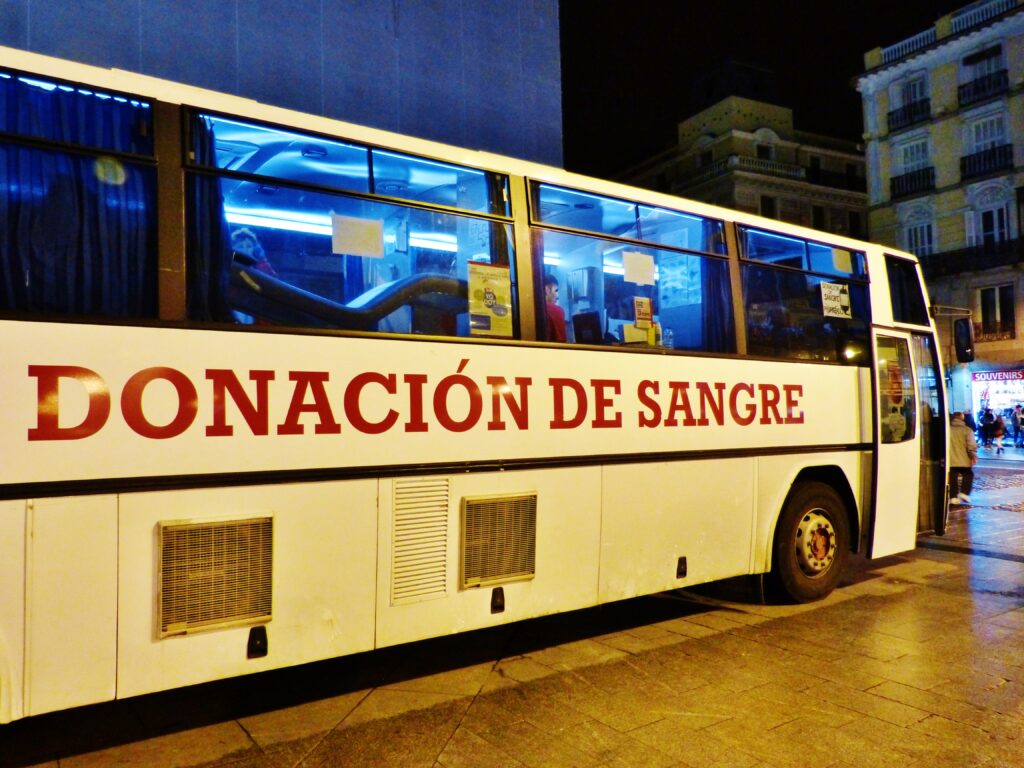
Back at Puerta del Sol, we ran across this blood donation bus. We could actually see people inside the bus donating blood. I can’t imagine any situation where I’d just be strolling around a city and see something like this and think oh, good idea, I think I’ll hop on up into that bus and let them stick a needle in my arm to draw blood.
The next morning we went out and had churros for breakfast.

This was the place we’d actually meant to go the first night but the directions we had were a little unclear. The two places are just a block or so away from each other. Anyway, the place we had these churros is called San Gines and it is obviously in everyone’s guide book because it was very crowded. It’s open 24 hours a day and the line was out the door when we got there at about 10:00 in the morning.
If you ever find yourself there, here’s how it works. You go up to the register and place your order. In terms of food, they don’t have much besides churros and porras. Porras are pretty much churros in a different shape. You get your receipt, which is in two parts, and you find a table and put your receipt on the table. A waiter comes along and rips off his part of the receipt. A little while later your order is delivered. We saw several people without receipts trying to sit at tables and they got chased away, so be sure to order and get your receipt first.
After breakfast we headed to Plaza de Oriente, back near the palace area.

That’s a statue of Philip IV, who built the palace. It was an technically innovative statue when it was sculpted because both of the horse’s front legs are in the air. The statue was supported, in part, by the tail making contact with the pedestal.
We then made our way to the palace to take a tour.

We rented audioguides, which were very helpful and informative. The rooms you get to see are very lavishly furnished, including the throne room and dining room. Definitely worth a visit especially because you can go at your own pace instead of being at the mercy of a tour guide. Some palaces we’ve visited gave you no choice about using a tour guide and some of the tours feel rushed with not a lot of information or time to take in what you’re seeing.
After visiting the palace we went back to Plaza Mayor to catch the end of the coin and stamp market that is held there every Sunday.
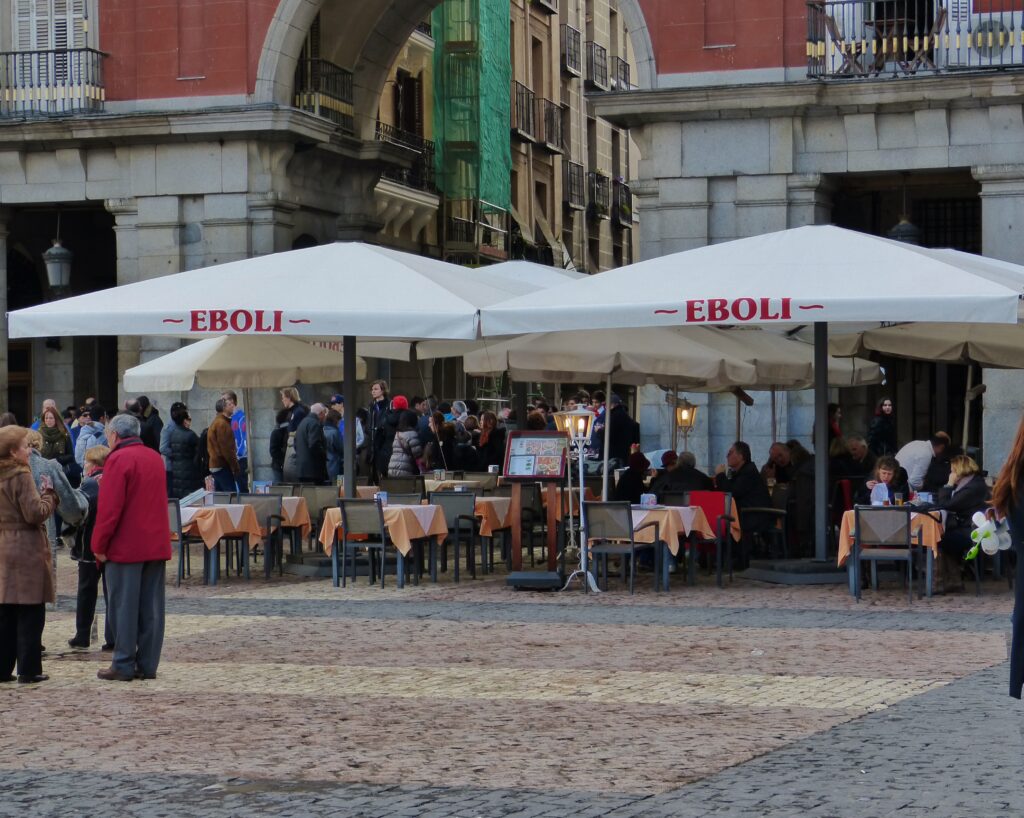
Notice the name of the restaurant on the umbrellas. A little too reminiscent of Ebola virus to make me want to eat there.
We went instead to a restaurant nearby where we sat outside and enjoyed some tapas while sharing a pitcher of sangria. See, I told you Sean changed his tune about that drink!
After the pitcher of sangria we decided a nap was in order. On the way back to the apartment, we passed this building.
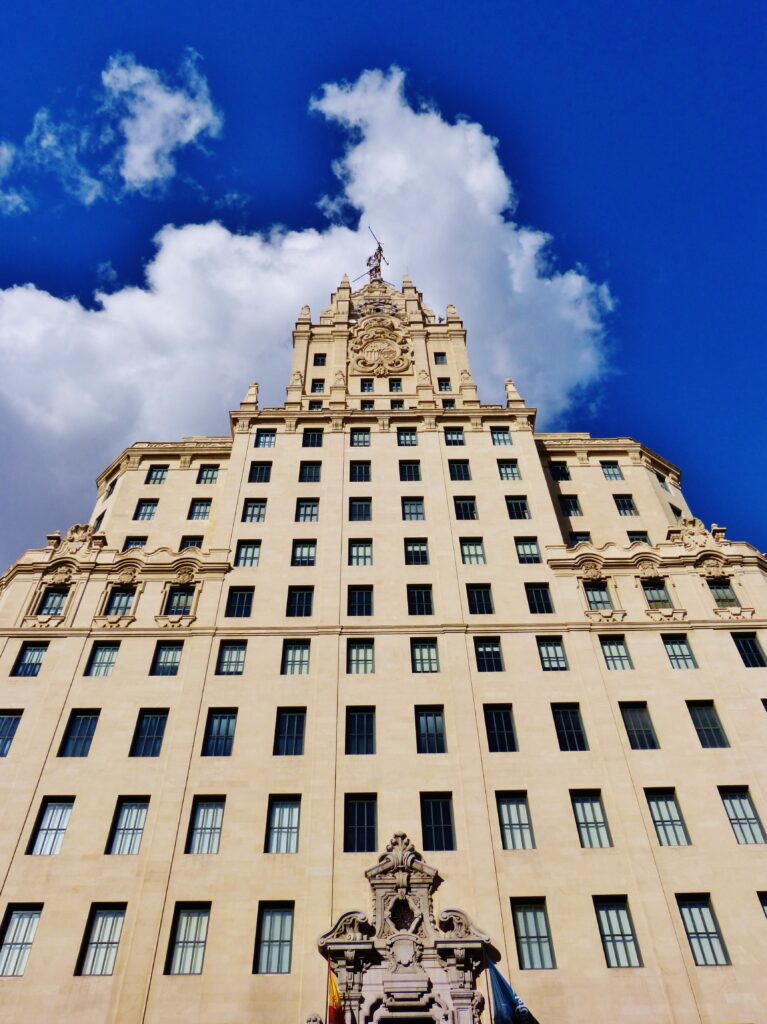
It’s the Telefónica Building on a main street in Madrid called Gran Via. It was completed in 1929 and was the first skyscraper in Europe. Ernest Hemingway reported from here during the Spanish Civil War.
After our little nap, we walked along the Gran Via after sunset.
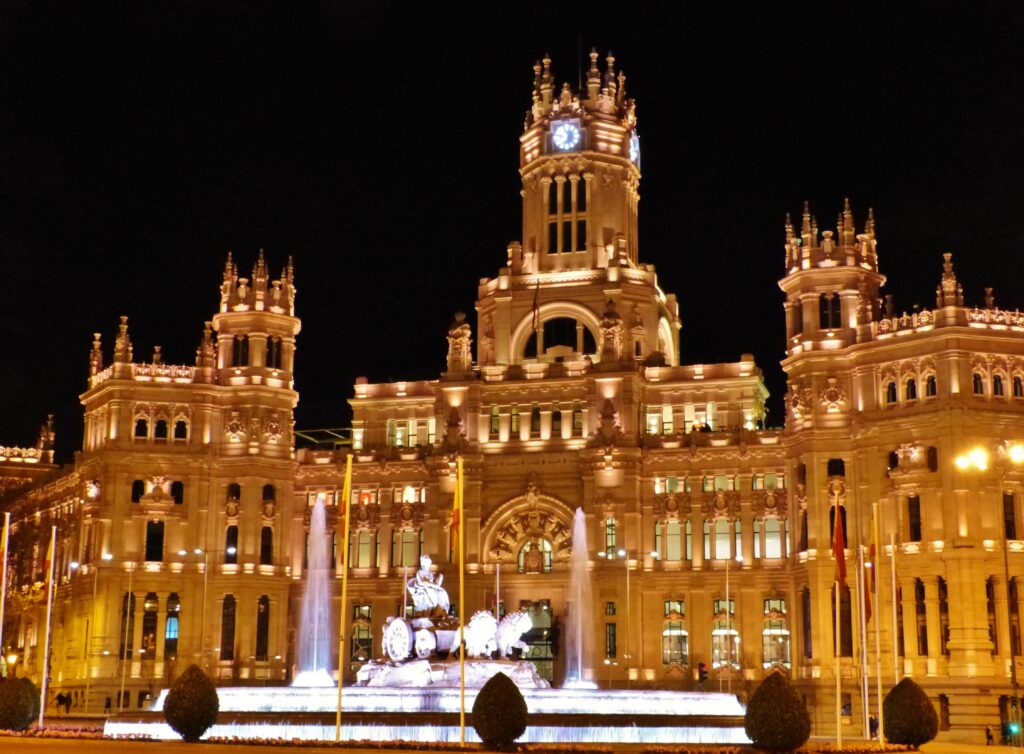
There you see the Palacio (palace) Cibeles, located near one end of the Gran Via. It was built in 1909 and was originally the main post office. It is currently the Madrid City Hall. The Cibeles Fountain in front of the building depicts the goddess Cybele in a chariot being pulled by two lions and pre-dates the palace by about 125 years.
Heading back towards the rental apartment we got to see the Metropolis building, a famous Madrid landmark, lit up at night.

It was built in 1911 for an insurance company.
I have to say the architecture in Madrid is just beautiful.
This souvenir store obviously used to be something else.

On our final morning in Madrid we walked down to Plaza de España the other end of Gran Via before we had to leave for the airport.

This building is the Edificio España or Spain Building. It was built from 1948 to 1953 and was at one time the tallest building in Spain.
And here I am with the statues that I really wanted to see.
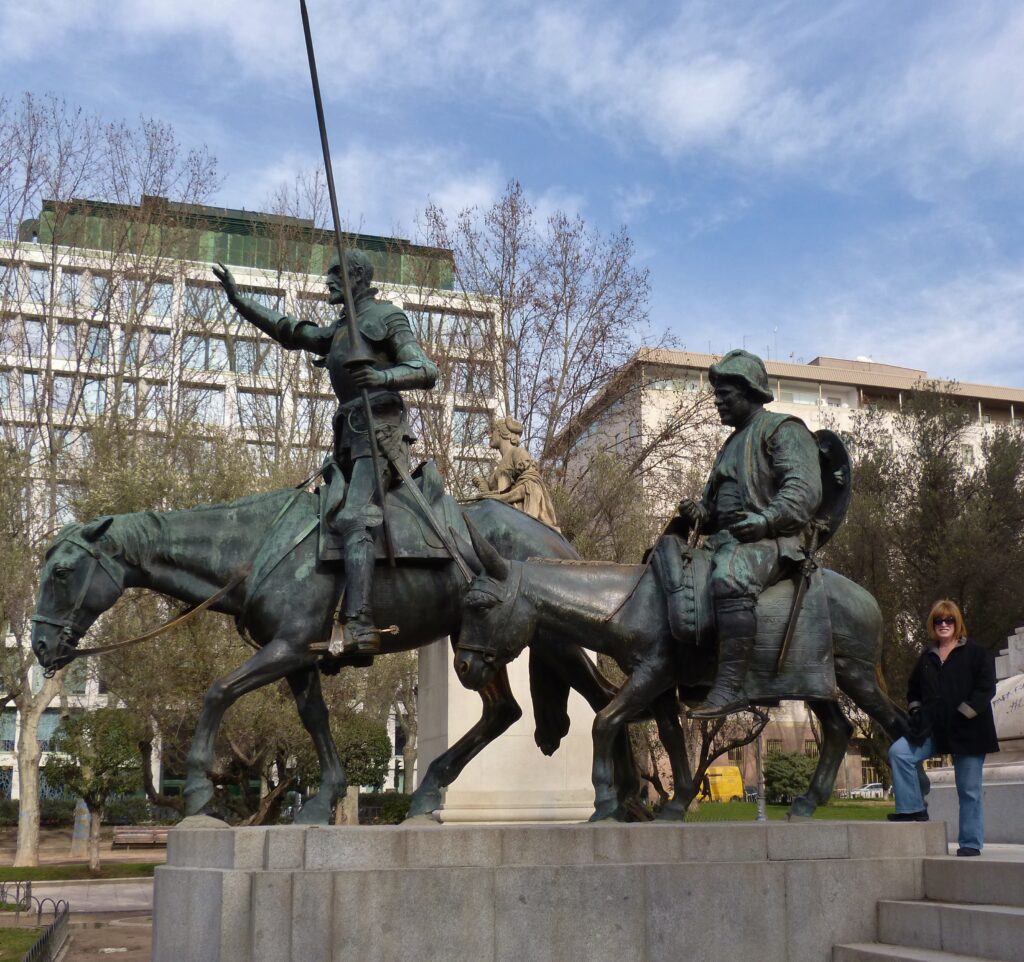
They are part of the monument to Cervantes, author of Don Quixote. As you might imagine, then, they depict Don Quixote on his horse Rocinante and Sancho Panzo on his donkey Rucio. Cervantes was born very close to and died in Madrid.
Before leaving Plaza de España we checkout out this fountain.

That pigeon was having a grand old time playing and bathing in the water.
We then went back to the hotel, grabbed our luggage and walked over to catch the express bus to the airport.
On the way to and from the airport we passed Our Lady of Almudena Cemetery. I wish I could have gotten a photo of it. If I ever make it back to Madrid I will try to make it a point to visit this place. I have never seen a cemetery this big in my life, although there are apparently several bigger cemeteries in the world. Almudena has about five million people buried in there. Five MILLION. Can you imagine?
We had a great time visiting Madrid and before ending this post I just have a few more observations. The first is that Madrid was very crowded, considering that it was off-season. Normally when we travel off-season we find places pretty empty, but not Madrid. It was much more crowded than Florence, which we’d just visited the month before.
The crowds are even bigger at night. I mean I know they eat dinner late and go out to clubs late I Madrid, but I was stunned by the nighttime crowds. I began to think the city was populated with vampires who could only come out after dark.
The last thing is that Madrid is fairly hilly. It is actually the highest capital city in Europe, at 2,188 feet above sea level. Just something to think about if you have any kind of mobility issues and/or are carrying around a lot of luggage. I’m more of a fan of flat terrain, which is probably one of the reasons I love The Netherlands so much, but the people, sights, food and drink of Madrid can almost make you forget that you have to trudge up a lot of hills to experience it all.

